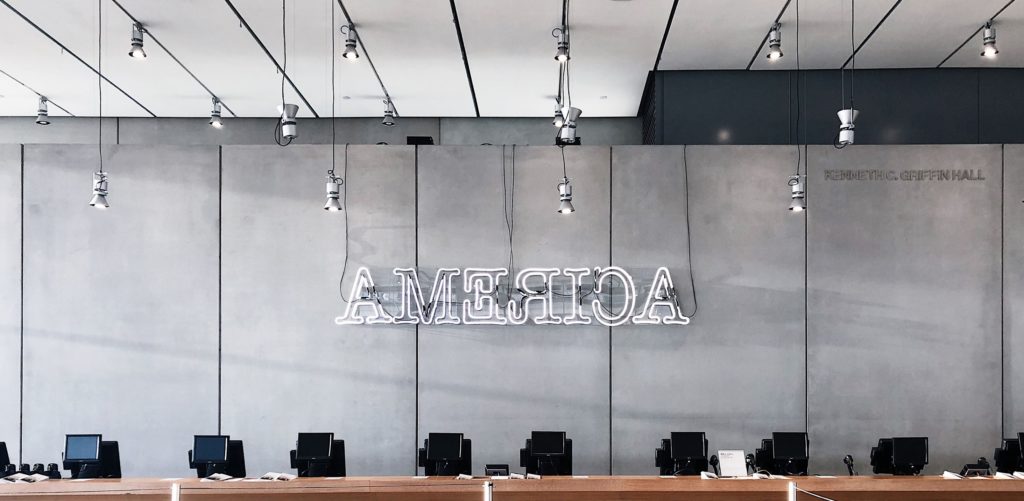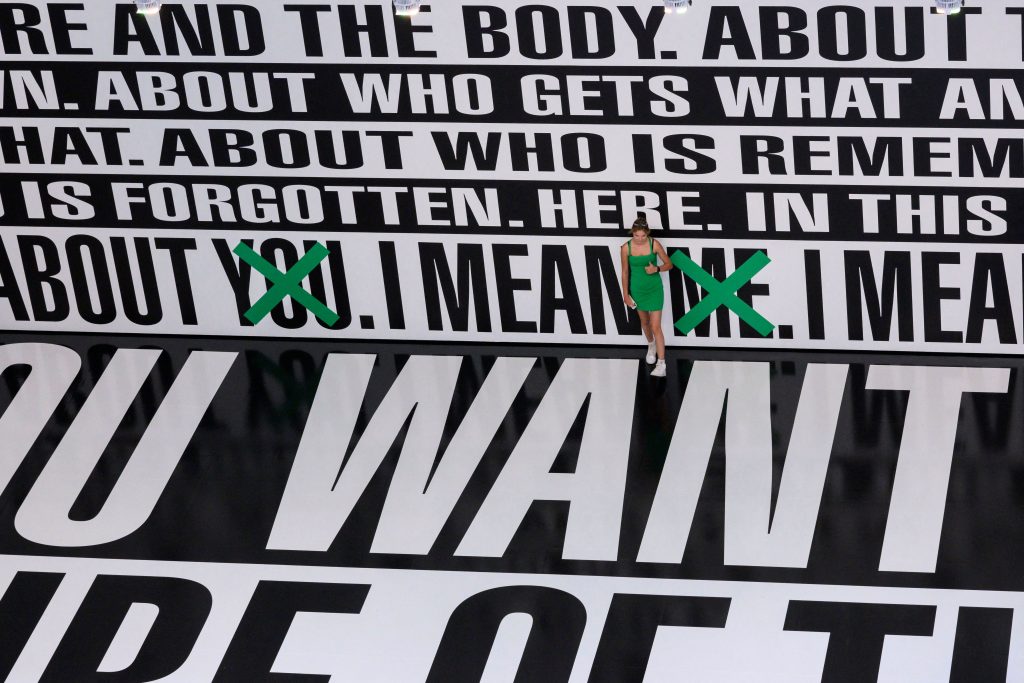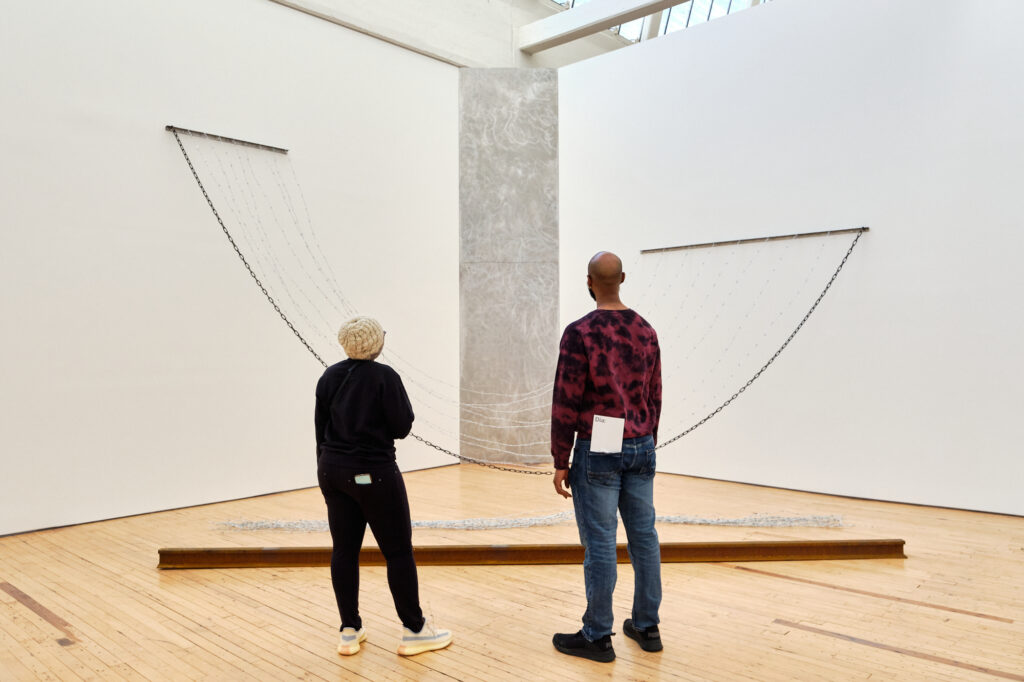Plus, watch a film that summarizes the key findings.
 Installation view, Glenn Ligon, Rückenfigur (2009). © Glenn Ligon, courtesy of the Whitney Museum of American Art.
Installation view, Glenn Ligon, Rückenfigur (2009). © Glenn Ligon, courtesy of the Whitney Museum of American Art.How much progress has the art world really made when it comes to equity and representation?
With the Burns Halperin Report, we decided to do the math. And we found that the art world’s perception of progress far outpaces reality.
Since our first edition in 2018, the report has grown into the largest database of its kind, housing three distinct but interconnected data sets. For the 2022 edition, we examined representation in U.S. museums and the art market for work by Black American artists, female-identifying artists, and Black American female-identifying artists, by tracing museum acquisitions (a total of almost 350,000 objects) and exhibitions (nearly 6,000), as well as auction results over more than a decade, and data from leading galleries on representation and sales.
For the first time this year, we published a variety of voices responding to and contextualizing the data. They include case studies that explore how individual institutions managed to create change, op-eds from museum leaders about what change looks like on the inside, and contributions from artists, art-market experts, and researchers about why representation is just one small piece of a larger system.
We also produced a film to summarize our findings. You can find that below.
THE FINDINGS

Introducing the 2022 Burns Halperin Report by Julia Halperin and Charlotte Burns
Perceptions of Progress in the Art World Are Largely a Myth. Here Are the Facts by Julia Halperin and Charlotte Burns
The Data Visualized by Nehema Kariuki
Exactly How Underrepresented Are Women and Black American Artists in the Art World? Read the Full Data Rundown Here by Julia Halperin and Charlotte Burns
Methodology: How We Gathered and Analyzed the Data for the 2022 Burns Halperin Report by Julia Halperin and Charlotte Burns
OP-EDS

Dia Helped Put the Canon in Place. Here’s How We’re Rewriting It by Jessica Morgan
1,760 Won’t Do: Why We Must Go Beyond Surveying Collections and Interrogate Power Structures in Museums by Terence Washington
Monolithic Museum Collections Are Like Climate Change—They Will Take Generations to Undo, But We Must Start Now by Naomi Beckwith
8 Things You Can Do—Right Now—To Create Change in Your Museum Workplace by Mia Locks
Caste in Stone: Why Classifying Artists by Race Is Not Just a ‘Social Construct’ by Adrian Piper
Dear Billionaire: An Open Letter to Museum Patrons by Nizan Shaked
Can Philanthropy Shape Equity in the Arts? 5 Questions to Consider When Making a Donation by Christine Kuan
Art Collectors Have Become Increasingly Risk-Averse. It’s Their Loss—and Ours by Allan Schwartzman
Museums Can, and Do, Talk About Race. Just Not Whiteness by Zoe Samudzi
JOURNALISM

The Art World Is Actually Not Very Creative About What It Values. What Would It Take to Change That? by Julia Halperin and Charlotte Burns
These Two Museums Sold Art by White Men to Buy Work by Women and Artists of Color. Did It Actually Tip the Scales? by Zachary Small
Here Are 5 Concrete DEAI Policies Other Industries Have Used Successfully That the Art World Would Do Well to Consider by Tim Schneider
‘It Takes Two Villages’: How the MCA Chicago Transformed Its Collection at Unprecedented Speed to Better Reflect Its Audience by Melissa Smith
Who’s Afraid of Women of a Certain Age? The Market Still Dramatically Undervalues Female Artists—But There’s More to the Story by Katya Kazakina
For Some American Artists, Recognition by Mainstream Art Institutions Is a Means to an End: Building Their Own Alternatives by Melissa Smith
Artists and Critics React to the 2022 Burns Halperin Report by Andrea Fraser, Laurie Simmons, and More